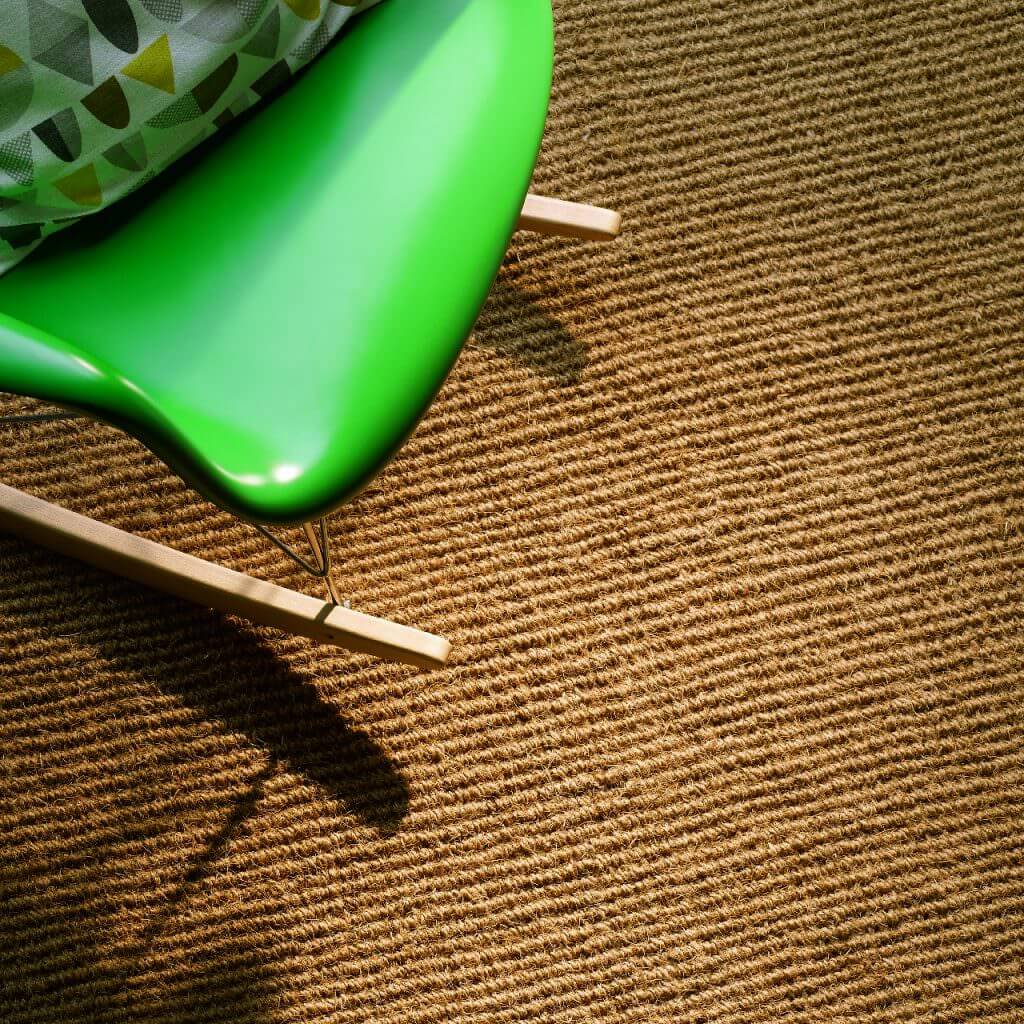What is Coir?
Coir is actually the fibre from the husk of the coconut and it is probably the oldest form of natural plant covering for floors, with its use dating back for centuries. It is incredibly strong and durable and is thus a great alternative to sisal and other softer forms of natural flooring, for areas that receive high wear and tear.
The husk is taken from coconut palms that grow along the inner waterways and lakes of India, in particular Kerala. This is first soaked in fresh water for several months and then beaten to soften the cellulose fibres. Because these fibres are short and hard, they are spun by hand rather than by a machine. This hard ‘yarn’ is then called “kayar” and it is used to make doormats, ropes, sacks and floor coverings. Coir has a unique texture which produces a warm look that can’t be achieved with modern synthetic materials.
Coir as Flooring
Coir makes ideal flooring, especially in areas that receive high traffic, as it is very resistant to wear and tear. It is a great alternative to carpet and also to other natural plant coverings that are too fine to withstand heavy wear. Coir can be used as carpets but also as rugs and mats, which are very strong and tightly woven. It is a strong but coarse fibre, and probably isn’t the best material for areas where comfort under-foot is a consideration.
Coir carpet can be installed throughout the entire house, just like traditional carpet, but it is not advisable to install it in bathrooms and kitchens, as it is vulnerable to excessive moisture. Like all natural flooring, it is best not to attempt DIY but to find a professional floor layer who is experienced in laying this type of flooring. Coir can be installed directly to the floor, but an adhesive underlay is highly recommended as it will help the coir carpet last longer; it’ll be easier to remove when the time comes to replace it; if it is good quality, it will help to hide any unevenness in your floor and it will also provide both heat and sound insulation, thereby reducing energy bills and noise pollution. Essentially – combines with the use of high quality underlay and with due care, coir wears the same as high-quality carpets.
Because coir is a “natural” product with an expected rustic look, it is very minimally processed – unlike synthetic floor coverings which often have many chemicals added to create particular colours and effects. Unfortunately, these chemicals also create the perfect conditions for rapid wear, whereas coir, in its natural state, retains its inherent strength and durability. Coir is resistant to insects, in particular, carpet moth damage, as the natural oils inherent in the fibres repel insects. Coir is very low maintenance, although regular vacuuming is recommended.
Coir is very similar to timber, so it will expand and contract with higher and lower humidity, respectively. This must be accounted for when laying coir flooring and also in considering the structure and dimensions of a room, as well as its usage. Although coir is generally very durable, if it is continually exposed to strong sunlight, in conditions of heat and low humidity, then its fibres can become brittle and thus weakened. Although it is a good alternative to traditional carpet in many respects, coir may not be comfortable to sit on for long periods.
Feel free to explore our wide selection of carpet colours, including soothing Cream, elegant Grey, versatile Beige, and timeless White, to discover the perfect hue that complements your style.






